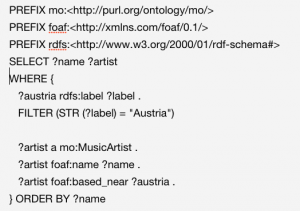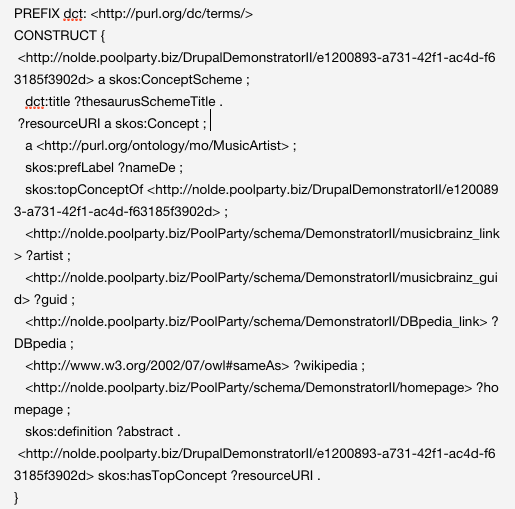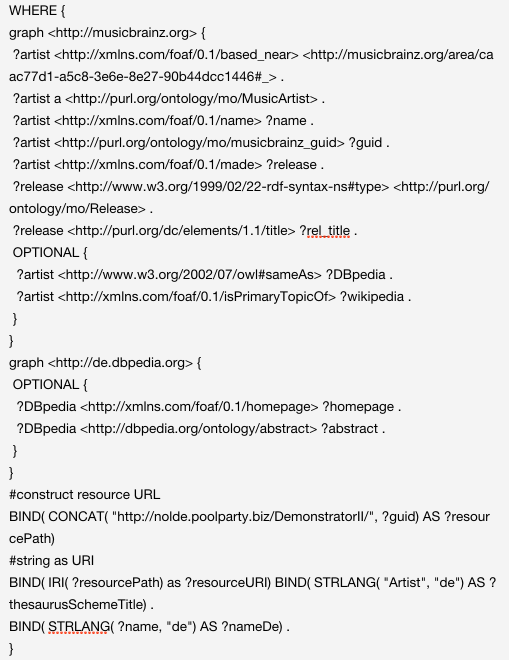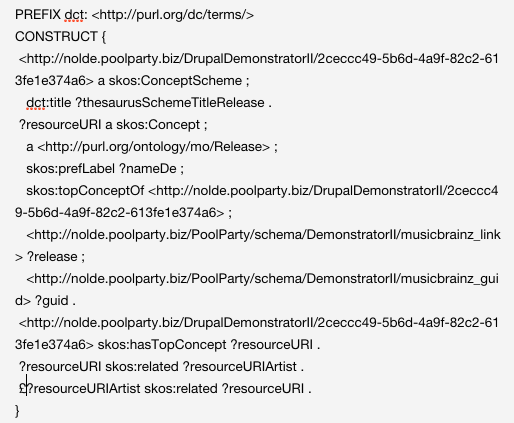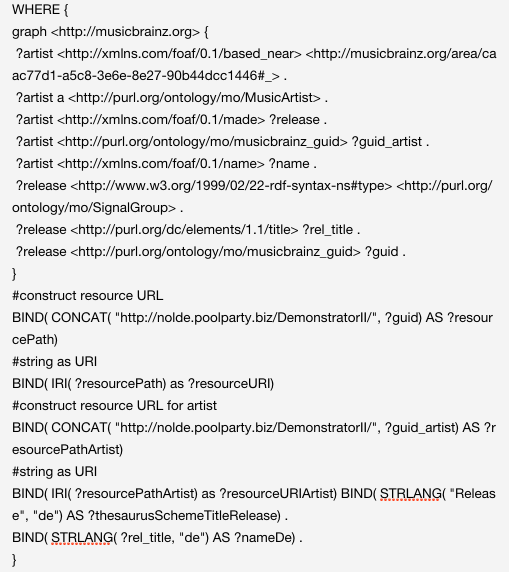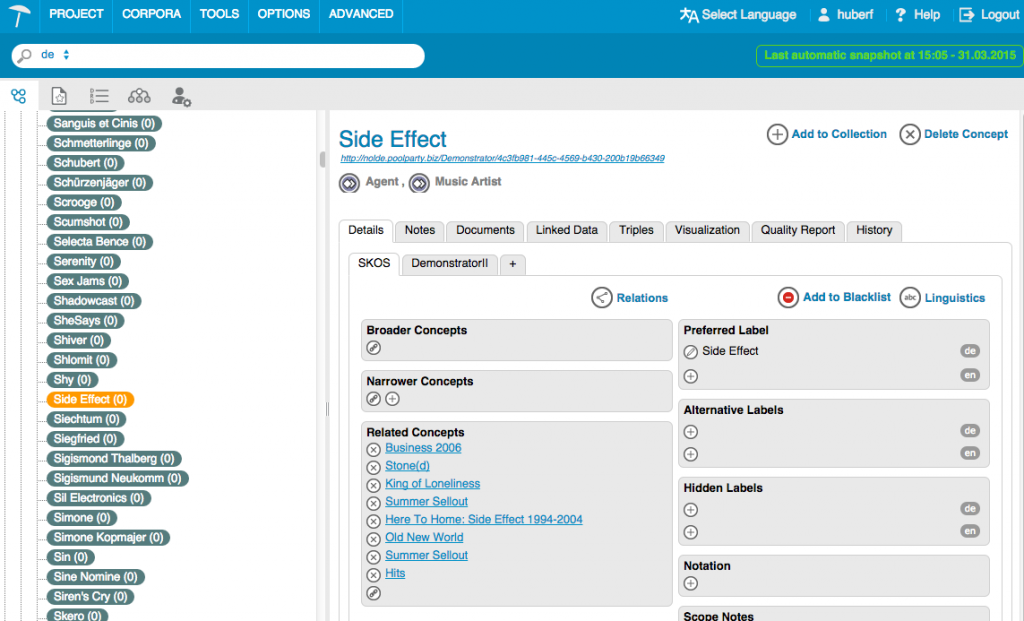Learn more
- Apr 9, 2015
Transforming music data into a PoolParty project
Goal
For the Nolde project it was requested to build a knowledge graph, containing detailed information about the austrian music scene: artists, bands and their music releases. We decided to use PoolParty, since theses entities should be accessible in an editorial workflow. More details about the implementation will be provided in a later blog post.
In the first round I want to share my experiences with the mapping of music data into SKOS. Obviously, LinkedBrainz was the perfect source to collect and transform such data since this is available as RDF/NTriples dumps and even providing a SPARQL endpoint! LinkedBrainz data is modeled using the Music Ontology.
E.g. you can select all mo:MusicArtists with relation to Austria.
I imported LinkedBrainz dump files and imported them into a triple store, together with DBpedia dumps.
With two CONSTRUCT queries, I was able to collect the required data and transform it into SKOS, into a PoolParty compatible format:
Construct Artists
Every matching MusicArtist results in a SKOS concept. The foaf:name is mapped to skos:prefLabel (in German).
As you can see, I used Custom Schema features to provide self-describing metadata on top of pure SKOS features: a MusicBrainz link, a MusicBrainz Id, DBpedia link, homepage…
In addition you can see in the query that also data from DBpedia was collected. In case a owl:sameAs relationship to DBpedia exists, a possible abstract is retrieved. When a DBpedia abstract is available it is mapped to skos:definition.
Construct Releases (mo:SignalGroups) with relations to Artists
Similar to the Artists, a matching SignalGroup results in a SKOS Concept. A skos:related relationship is defined between an Artist and his Releases.
Outcome
The SPARQL construct queries provided ttl files that could by imported directly into PoolParty, resulting in a project, containing nearly 1,000 Artists and 10,000 Releases:
You can reach the knowledge graph by visting the publicly available Linked Data Frontend of PoolParty: http://nolde.poolparty.biz/AustrianMusicGraph
E.g. you can find out details and links about Peter Alexander or Conchita Wurst.
